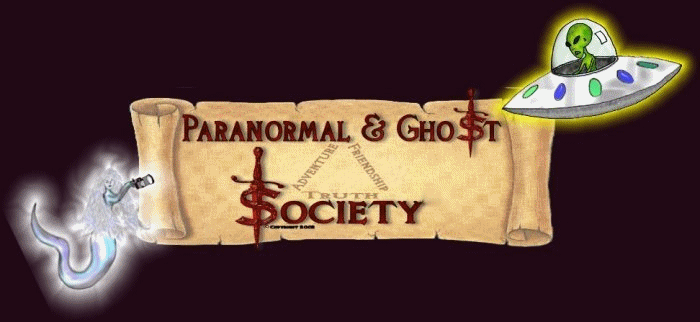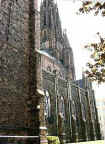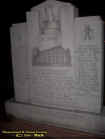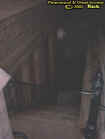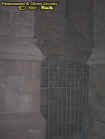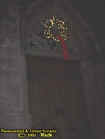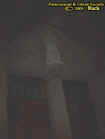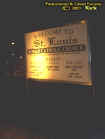|
|
||
Saint Louis Church is over 150 years old and was erected in 1829, when Louis Stephen Le Couteu1x de Chaumont, a Buffalo resident of Noble French ancestry, deeded the plot of land to build this monolithic structure. The church was constructed from Lumber which was used from the forest that covered all of Delevan Ave which no longer exist. In 1832 the church was complete and named the Lamb Of God Church. In 1843 the church was rebuilt and instead of lumber brick was used giving it a more stable look and feel. In 1885 the musical hall across the street was on fire which spread to the church. The church burned down and all the local parishioners who attended here used a 3rd church for 4 years till reconstruction and remodeling could be finished. In 1889 the Feast Of St Louis took place this was the first service to take place in the newly remodeled and reconstructed church since the fire. Which its name was born called Saint Louis Church "Mother Church of the Diocese of Buffalo."The church was composed of Medina Red Sandstone and is was constructed to look gothic by architects Schickel & Ditmar, The church is almost 250 feet in length and some of the roofs go as high as a little over 100 feet. There are 3 towers on the roof two of them are 128 feet in height and the Chief tower one of the most elegant in the country is a enormous 245 feet in height and can be seen from anywhere in downtown Buffalo just about. The giant clock on the church was a gift with was placed on one of the towers now called Seth Thomas Tower came from Hon. Elbridge G. Spaulding, the "Father of the Greenback," as a gift to the church as he took residence across the street. Now we get to the inside of the church which has over 250 pews, can seat almost 2000 people and has the very beautiful Kimball Organ. There are also Statues of St Anthony and Francis which were carved out of a single piece of wood. There is a high altar here which contains a life like statue of St Louis. The high altar, St. Joseph and Seven Dolors altars were made out of marble from the Lauz Marble gifts from Miss Emma Lang. The Sacred Heart Altar was the gift of Gerhard Lang, and the Altar of the Blessed Mother a gift of Chas. and Suzanne Lautz. So as you can see alot of the beautiful altars and such were gifts from prominent and generous people. Also in 1903 a pulpit was carved with the 4 evangelists and statues of the doctors of the church that served in the 1800s. Lastly we cannot forget the 2 large beautiful mosaics which are on the left and right sides of the Tabernacle. Now we get to the stained glass over the high altar consist 7 giant panels each one tells a story about St Louis the IX of France. It is said he held the crown of thorns which was put on on the head of Jesus during the crucifixion. St Louis built the Sainte Chapell in France which housed the Crown Of Thorns. He led the 7th crusade and died in 1270. The remaining windows in the church contain biblical themes of the saints and bible. The 7 long windows were made in Germany. The rest of the windows which are on the sides of the church were made by Riester & Frohe in Buffalo NY itself who also made windows for other churches in the area. All the windows were donations by local Parishioners. In addition to that St Louis Started the first parochial school in the Western NY Regions in the 1830s. The school took place in the church itself till a building was erected next to it in 1850. Many Buffalo locals attended the school till in 1959 it closed down perhaps due to the lack of funding and many public schools in the area which were becoming more popular. In 1986 the building was demolished but this did at one time remain the oldest educational institute in NY state. So as you can see another church in the Buffalo area with a lot of history. Also one of the larger ones in the area. This is why we chose to investigate as rod iron surrounds this castle it really is amazing to have both the history and the ghost that surround this place. This church also has a basement as most older churches do. As you walk along the church you will see many stair wells, or iron fences that surround the basement windows. This seems to be where a lot of the ghost hide in areas that are darker just beyond the shadows. Although I cannot say the ghost here are shy because two of my ghostly photos taken here were directly in front of the church with it being very well lit. But what I wanted to do is take a few photos again not be greedy but enough to show you the ghost that haunt this church. Are the ghost friendly? You bet when you can ask a ghost to stand somewhere and it does then it means they have a conscious of what they are doing. But the main areas that are haunted are the front entrance, basement stairs and inlets. From my investigation here we realized that you had to be real patient and take your time just to capture anything. For example it took a good 5 minutes before I got something at the main entrance I had to stand there and wait a little bit to capture the entities curiosity. I also walked around here a few times just to get a psychic impression of where the ghost might be. I mean when walking around it you see so much all the engravings in the church, little crosses all over the roofs that meet at points, a ladder up near the dome like roof and even a memorial next to the church one side has the memorial the other a crucifix garden. So besides this being a beautiful church the ghost of St Louis for over 150 years of history also seem to come with it. © By Rick-AngelOfThyNight Bibliography: Michael Riester on Catholic Churches Brief History of St. Louis ChurchSt. Louis' was the first congregation organized west of Rochester, and the first in the present Diocese of Buffalo. The Rev. Stephan Badin sojourned in Buffalo six weeks with Mr. Louis Lecouteulx before returning to his own mission in Kentucky. This was in the winter of 1828 - 1829, and Father Badin said Mass for the Catholics several times during his visit, in the court house or in the home of Mr. Lecouteulx. Mr. Lecouteulx owned several tracts of land in Buffalo, and Father Badin persuaded him to donate the plot, corner Main and Edward Streets, as a site for a church. The deed dated January 5, 1829, was drawn up and sent to Bishop Dubois as a New Year's gift. The Bishop came to Buffalo, July of the same year, sang high Mass in the court house and dedicated the ground to the purposes designated by the donors. The Bishop celebrated a solemn high Mass on this occasion in the court house, at which there were more than eight hundred persons present. This was the first time that such religious solemnity had been witnessed in Buffalo, and it made a deep impression on both Catholic and Protestant. At 4 o'clock in the afternoon another ceremony, strange to this part of the world, took place. The Bishop vested in solemn Pontificals, and, proceeded by an immense throng, left the court house in procession to bless the new cemetery. It was a strange and inspiring sight to witness this procession, headed by four old men who recited the Rosary in German, while English, and French and German responded in his own tongue. A delegation of Catholics called upon the Bishop and begged him to send them a priest. The Rev. John Nicholas Mertz came to Buffalo shortly after, and he was the first resident priest of the incipient St. Louis' congregation. He secured a little log house on the west side of Pearl Street, midway between Court and Eagle Streets, where he dwelt for some years. He rented a small frame building, which had at one time served as a meeting house for Methodists, situated in an open space between Pearl and Main Streets; and here the saintly old man organized the first Catholic congregation of Buffalo. Here they had vespers occasionally, sung by an impromptu choir, to the accompaniment of a small reed organ placed on the floor near the door of the building. Here they had the first school also, where every afternoon the younger ones could learn to read and write and spell. Many Catholics came to Buffalo in the next three years: and Father Mertz resolved to erect a more commodious structure, on the site donated by Mr. Lecouteulx. The parishioners were poor and could not donate money, but they gave their time and labor to the work; and they hewed huge timbers in the forest on Delevan Avenue and drew them in with their ox teams, and placed them in position for the frame work of their church. The interstices were filled in with a primitive sort of mortar composed of straw and clay. Father Mertz had brought some money from Europe, and some of this he used to purchase whatever was needed that his people could not supply. He also brought a bronze tabernacle with him, which had a symbolic figure of the "Lamb" on the upper portion of the door. It was from this that the church derived its name, and it was called the "Lamb of God." The little church was begun in 1830. The corner-stone was laid July 8, 1831; but such slow progress was made that it was not ready for services until the spring of 1832. No provision was made for heating the church in cold weather. Artificial heating was considered a luxury, which few of the early churches enjoyed. In 1835 Father Mertz was fast failing under the weight of years and the burden of his ever increasing labors; so the Bishop sent him an assistant in the person of the Rev. Alexander Pax. Father Mertz practically transferred the responsibility of the parish to Father Pax, and the next summer he proceeded to Europe for a well-earned rest. Father Pax took full charge of the church, and he planned to build a large brick church around the form of the old rough cast structure. He labored under many difficulties, and against much opposition, but he triumphed and he saw the completion of his work in 1843. Then he resigned his position and returned to his native land. This church was later enlarged, and was totally destroyed by fire on the evening of March 25, 1885. Not disheartened by the great loss, the congregation, under the direction of Rev. Joseph Sorg, immediately started a frame structure, which was completed in less than three weeks. The pastor and people next planned the magnificent structure which now adorns the handsome property. The corner-stone was laid May 29, 1886, and the first religious service was held in the church August 25, 1889, when the building was blessed . The following pastors labored in St. Louis' Church: Rev. John Nicholas Mertz, November, 1829, to June, 1836; Rev. Alexander Pax, August, 1836, to March 19, 1843; Rev. Francis Guth, September 1, 1844, to September, 1855; Rev. William Deiters, September, 1855, to June 11, 1861. Priests from St. Michael's and St. Mary's attended during vacancies. Rev. J.E. Moshall, September, 1861, to February, 1862; Rev. S. Schoulepnikoff, January, 1864, to August, 1867; Rev. J.M. Sorg, August, 1865, to September, 1888; Rev. P. Hoelscher, D.D., to December 27, 1916. Dr. Hoelscher added greatly to the beauty of the building by interior ornamentation and handsome furnishings. Miss Emma Lang left $16,000 for a marble altar, which was placed in position in the sanctuary of the church. Monsignor Paul Hoelscher died, December 23, 1916, and was succeeded by the Rev. Henry Laudenbach in January, 1917. Fire again threatened the church in 1921, but the damage was soon repaired and the church was redecorated. The church was consecrated in 1912. The rectorship of St. Louis' is one of the irremovables. Evils had arisen from the trustee system, the trustees claiming the right to appoint or disapprove at will, all officials of the parish, even including the pastor. In the first synod of the diocese, held in New York, August, 1841, a decree was passed defining the powers of pastors and trustees. Bishop Hughes ordered the decrees to be read in all the churches of the diocese. At a meeting of the trustees of Saint Louis Church held, shortly after the decrees of the synod were read in the church, they decided not to comply with the new regulations. This insubordination caused a bitter and long drawn out controversy, filled with accusations and incriminations which finally terminated in an interdict which closed St. Louis' Church for two years.
|
||
|
|
|
